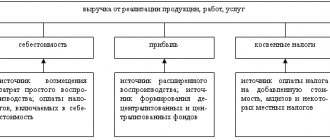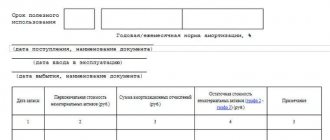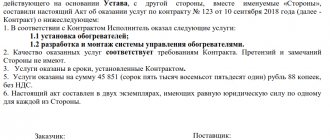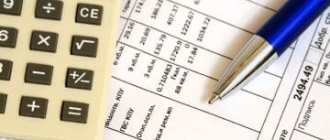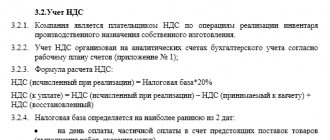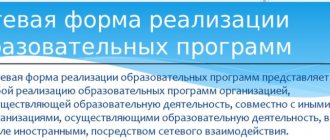VAT when exporting goods from Russia
The peculiarities of the value added tax when exporting products are discussed in clause 2 of Art. 151, paragraph 1, art. 164, paragraph 1, art. 165, paragraph 9 of Art. 167 of the Tax Code of Russia. Exported goods and materials are not sold to Russian consumers, so the state returns the tax previously paid by the manufacturer. The terms “no tax paid” and “0% rate” are used synonymously. All primary documents confirming the export of goods that should be submitted to the tax office are specified in the agreement on the Eurasian Economic Union dated May 29, 2014 (Appendix No. 18) and in Article 165 of the Tax Code of the Russian Federation. Taxpayers and agents provide supporting documents in electronic format; the validity of the provisions is enshrined in the order of the Federal Tax Service dated September 30, 2015 No. ММВ-7-15/427.
Procedure for VAT refund
To systematize the information we have considered, we will write it down in the form of a step-by-step algorithm:
- Signing the contract. This step helps the foreign trade accountant check the basic conditions of mutual cooperation - the procedure for payment and prepayment, the method and timing of mutual settlements.
- Creation and execution of a transaction passport. To do this, you must have a list of all necessary shipping documents. When shipping goods for the full amount of the current contract, it is necessary to close the transaction passport.
- Prepayment accounting. If the contract stipulates that the delivery of goods is carried out on the basis of prepayment, it is necessary to monitor the status of your organization’s current account. After receiving the amount, you must draw up a Certificate of Currency Transactions within 14 days.
- Placing an order and forming a shipment. Using accounting programs, a shipment of goods is created, where a 0% rate is indicated if there are all documented grounds for this.
- Submission of financial statements. Every month the customs department accepts reports with all sets of HS codes for goods.
- Closing the advance payment amount with a Certificate of supporting documents if the goods are shipped within a month based on the received advance payment.
- Submitting a free-form application for tax refund.
- Filling out the sales book. Based on the results of creating and filling out the sales book for the current or next reporting period, it becomes possible to fill out Section 4 and Section 6 of the tax return.
- Conducting a tax audit. Have you submitted all the necessary customs documents to the tax office? Then the check begins.
- Tax office decision. The inspection takes 180 days, after which a decision is made within 10 days, and the money is transferred to the account of your legal entity.
In conclusion, following these steps will provide you with a tax refund when purchasing goods for resale abroad. The main thing is compliance with deadlines and a set of documents.
Sources:
Tax Code of the Russian Federation Article 165. Procedure for confirming the right to apply a tax rate of 0 percent
Tax accounting and VAT reporting for export
In tax accounting, operations for the export of goods are recorded separately from the rest, using special registers. Organizations are required to maintain separate VAT accounting for exports and domestic sales of goods, works and services. It consists of using subaccounts and separate statements and journals. Sections 4-6 are completed in the tax return:
- if the zero rate is confirmed, then sheet 4 of the declaration is drawn up;
- if not confirmed - sheet 6 of the declaration;
- sheet 5 is rarely used.
The declaration form identifies more types of export transactions than the Tax Code of the Russian Federation - an individual accounting register is provided for each of them.
ConsultantPlus experts analyzed in detail the specifics of taxation during exports: how to calculate VAT, what rates to use, how to maintain separate accounting. Use these instructions for free.
About the profitability of export
Thanks to the refund of export VAT, operations for the export of goods are very profitable. Due to this benefit, it makes sense for some enterprises to strive to develop not only domestic sales, but also export goods abroad.
In fact, if a company sells a product that has a certain initial cost, then when selling it in Russia it will be taxed at a rate of 20%. At the same time, when exporting it, the tax rate will be zero, due to which the company’s margin will increase significantly if customs duties and taxes are not too high.
It is important! The zero rate applies to all situations when products are sent outside of Russia. In addition, this is the rate that applies if the goods cross the border with transit states, which include Belarus, Kazakhstan and Armenia.
Tax rate for exporters
The tax rate for the export of goods from Russia is 0% (subclause 1, clause 1, article 164 of the Tax Code of the Russian Federation). In other words, exporters are not exempt from value added tax: they are its payers, must submit declarations, and have the right to claim deductions for incoming amounts. To take advantage of the preferences, you must confirm your export transactions. They must be confirmed by documents provided for in Article 165 of the Tax Code of the Russian Federation.
Here are the main documents for confirming a 0 rate when exporting in 2021:
- original or copy of a foreign trade contract;
- customs declaration;
- copies of transport and shipping certificates.
In addition, the zero rate applies to the customs regimes listed in paragraph 2 of Art. 151 Tax Code of the Russian Federation:
- export;
- customs warehouse for export;
- free customs zone;
- re-export;
- removal of supplies.
Application of the rate
The list of goods to which the zero rate applies is presented in Art. 164 Tax Code of the Russian Federation. This rate can only be used if the goods are located in the Russian Federation before shipment. To take advantage of the preferential scheme, you need to provide a package of documents to the tax authorities within 180 days after crossing the border. Another 20 days of the next tax period are allocated to provide a “zero” declaration.
Example
LLC entered into a contract for the supply of equipment to Iran. The organization prepared the documents on August 24, 2014. The deadline expires on August 27, 2014. The exporter must provide documents from September 1 to September 20.
The application of a zero rate is an obligation, not a right of the taxpayer. If the documents are not collected on time, the organization will have to pay tax at its own expense.
Right to refuse
From 2021, 0% value added tax on exports has become not an obligation, but a right of payers. They were given the opportunity not to officially apply the exemption to exported goods. Refusal is possible for all export transactions as a whole, provided that an application is submitted to the tax service no later than the 1st day of the quarter from which the taxpayer plans to pay VAT according to the usual rules.
IMPORTANT!
You cannot refuse the zero rate when exporting to the EAEU. The provisions of the Treaty on the EAEU regarding the justification of clause 3 of the protocol do not provide for such an opportunity for taxpayers (clause 1 of Article 7 of the Tax Code of the Russian Federation).
The total period of refusal is no less than a year. Payers need this if they want to accept tax deductible at rates of 20% or 10% from suppliers who, having the right to a zero rate, do not want to confirm it, highlighting the regular tax in their invoices. To apply this benefit, the company will have to collect documents to confirm the 0 rate for export and submit them to the Federal Tax Service.
In past periods, tax authorities paid close attention to those who regularly “forget” to collect the necessary documents. Organizations were cunning, tried to buy VAT documents, carried out some export operations at the usual rate of 10% or 20% (18% until 2021), but processed something at 0%. Now there is no need to resort to such difficulties.
About export VAT
The situation with export VAT is somewhat ambiguous. The fact is that the rate on this fee is zero percent (0). In other words, in reality the company will not have to pay anything.
At the same time, it must be borne in mind that this tax is still considered to exist, albeit with such a zero rate. As a result, it cannot be said that the company does not pay this fee; it will definitely be said that it has the right to a VAT refund when exporting goods.
This means that the company is formally treated as a zero tax payer. Refund of export VAT in Russia requires filing a declaration for this fee on the part of the company. She also needs to confirm that she has carried out an operation to export products.
Note! Currently, companies have the right to a VAT refund, but not the obligation, as before. It makes sense for a company to waive this right if it wishes to deduct this tax, which was charged by counterparties who have the right to a zero rate, if the counterparty refuses to prove this right.
VAT tax base for export of goods
The tax base for value added tax when selling goods for export from the Russian Federation is determined as the cost of goods under the terms of concluded agreements (clause 1 of Article 154 of the Tax Code of the Russian Federation).
Please note that the tax base should be determined exclusively in Russian rubles. If the contract is concluded in a foreign currency, then recalculate at the official ruble exchange rate of the Central Bank of Russia on the date of shipment of the goods.
But the moment of determining the tax base for an export transaction directly depends on when you collected the package of documents. Please note that when exporting goods to the EAEU, the tax base is determined in the following order:
- If documents and confirmations are prepared within 180 days from the moment the goods are determined to be subject to the customs export procedure, then determine the tax base as the last day of the reporting quarter in which the documents were collected and include the information in the declaration.
- If documents and confirmations were collected after 180 days, then determine the tax base at the time of shipment.
For transactions with partners in the EAEU, please note that the confirmation period for the 0 VAT rate for export is 180 days from the date of shipment. This affects the determination of the tax base. VAT at a rate of 0% on the advance payment is not required to be charged and paid, according to the general rules.
IMPORTANT!
In his work, the taxpayer is obliged to organize separate accounting when registering transactions of a different nature. For example, when exporting raw materials and non-commodity goods and when producing products for sale in the Russian Federation. Methods for maintaining separate accounting should find a place in the accounting policy of the entity.
Rules in force until July 1, 2021
The above applies to both goods and works and services.
If export operations are carried out, then the “zero rate” rule applies. This means that the exporter does not charge VAT on goods supplied abroad, and the foreign buyer does not pay it (the goods are sold without VAT). At the same time, the exporter incurs expenses as part of its economic activities within Russia. This creates a situation in which the taxpayer does not have accrued VAT on export transactions (in other words, it is accepted at a rate of 0), but the tax imposed can be quite significant. As a result, if the taxpayer’s share of export operations is significant, then he will constantly generate negative VAT payable to the budget. That is, the state will have a permanent debt to it, which will be collected by the taxpayer from the budget.
This situation applies to both the export of goods and works and services. However, as of July 1, 2021, changes were made to the Tax Code of the Russian Federation, which changed the rules for accounting and calculating VAT on export transactions.
Refund, refund or deduction of VAT on export
All three terms meaning reduction or exemption from tax payments are often found on the Internet, and they are easy to confuse:
- the deduction refers to the calculation of the amount of tax (Article 171), determined by the enterprise itself when filing a declaration;
- refund or return of VAT when exporting from Russia is a general concept for offset and return (Article 176), the issue is decided by the Federal Tax Service on the basis of submitted documents: declarations and applications.
Paying taxes often leads to a situation where, due to deductions, the tax amount becomes negative. Further steps for tax refund:
- The company submits a declaration and an application for credit or refund of VAT. Offset on the declaration - the amount goes towards fines, arrears or future payments; If the documents indicate a return, the amount is transferred to a bank account.
- The tax office checks information in reporting declarations within three months, as provided for in Article 88 of the Tax Code of the Russian Federation on a 0 percent VAT rate for exports. Tax authorities are authorized to request additional documents, such as copies of invoices, sales ledgers or clarifying declarations.
- She then makes a decision within seven days about full, partial, or refusal of reimbursement. The form of compensation - offset or refund - is determined either by the Federal Tax Service to cover arrears to the budget, or according to the application.
- The Federal Inspectorate sends payment documents to the Treasury the next day after the decision on the return is made. The money is transferred by the Treasury within five days.
Calculation example
Below is an example of VAT refund calculations for exports.
During the quarter, IP Petrov sold 300 cabinets to domestic companies and 100 cabinets to foreign companies.
Russian companies collectively paid 1,348 thousand rubles for the products, VAT on this amount will be 224 thousand.
516 thousand rubles worth of goods were sent abroad, VAT is not paid on this amount.
Input VAT on the production of these pieces of furniture will be 943 thousand rubles.
To determine the amount of VAT refund when exporting from Russia for IP Petrov, it is necessary to determine what part of the total revenue was made up of funds for products sent abroad.
To do this, 516 thousand is divided by the difference between the total amount (1348 thousand) and the VAT amount (224 thousand). It turns out 0.459=0.46.
Next, the total amount of input VAT (943 thousand) is multiplied by this figure - 0.46, to get 433.78 thousand.
After this, they subtract 433.78 thousand from 943 thousand and get 509.22 thousand, which is exactly how much the deduction will be.
The VAT refund for export has been calculated.
Step-by-step instructions for confirming the zero VAT rate for export
When exporting to Belarus, Kazakhstan, Armenia, zero VAT is confirmed:
- An agreement under which a buyer from an EAEU country imports products.
- Application for import of goods and payment of indirect taxes from the buyer.
- Transport or shipping documents (consignment note TTN is recommended).
How to confirm the 0 VAT rate when exporting to other countries - send to the Federal Tax Service:
- An agreement or other documents related to the transaction, if there is no agreement (for example, an offer and acceptance).
- A copy of the customs declaration or an electronic register (a separate register is provided for each type of transaction).
- Copies of transport or shipping documents with customs marks or their electronic register.
Other documents (bank statements, invoices) do not have to be attached to the declaration, but should be kept in case the tax office asks to confirm the information specified in the declaration.
If the taxpayer has not provided documents confirming the zero tax rate, then VAT must be calculated according to general principles, and all calculations must be disclosed in the declaration. For example, at a rate of 10% or 20%.
Results
Confirmation of export is made on the basis of a package of documents provided for in Art.
165 Tax Code of the Russian Federation. If the package of documents on the customs declaration or shipping documents does not contain all the necessary marks from the customs authority, the tax authority will refuse to confirm the zero VAT rate. But even if documents of adequate quality are collected in full, violation of the export confirmation deadline will lead not only to additional work on drawing up an updated declaration and the accrual of VAT at a rate of 20% (or 10% depending on the type of goods exported), but also to the payment of a penalty. Refund of input VAT is made after checking the tax return based on the taxpayer’s application if he has no arrears. You can find more complete information on the topic in ConsultantPlus. Free trial access to the system for 2 days.
Peculiarities of paying VAT when importing into the EEC (Belarus, Kazakhstan, Armenia, Kyrgyz Republic, Russian Federation).
Article 72 of the Treaty on the Eurasian Economic Union (Signed in Astana on May 29, 2014) establishes that the collection of indirect taxes in mutual trade in goods is carried out according to the principle of the country of destination, providing for the application of a zero rate of value added tax and (or) exemption from excise taxes when export of goods, as well as their taxation with indirect taxes upon import.
Appendix No. 18 to the EEC Treaty approved a protocol on the procedure for collecting indirect taxes and the mechanism for monitoring their payment when exporting and importing goods, performing work, and providing services.
The EAEU rules provide for the right of the exporter to adjust (both upward and downward) the VAT tax base on goods sold. The reasons for the change in value may include the following (clause 11 of Appendix No. 18 to the Treaty on the EAEU, signed in Astana on May 29, 2014):
- change (increase or decrease) in the price of goods;
- reduction in the quantity (volume) of goods sold due to their return due to inadequate quality and (or) configuration.
Thus, the Protocol on the procedure for collecting indirect taxes (Appendix No. 18 to the Treaty on the EAEU, signed in Astana on May 29, 2014) does not consider the possibility of increasing the tax base for an export transaction due to an increase in the number of goods shipped for export.
When exporting goods from the territory of one Member State to the territory of another Member State by the taxpayer of the Member State from whose territory the goods were exported, a zero VAT rate and (or) exemption from excise taxes are applied upon submission of the necessary documents to the tax authority.
When exporting goods from the territory of one Member State to the territory of another Member State, the taxpayer has the right to tax deductions (credits) in a manner similar to that provided for by the legislation of the Member State applied to goods exported from the territory of this Member State outside the Union.
To confirm the validity of applying a zero VAT rate and (or) exemption from excise taxes by the taxpayer of the Member State from whose territory the goods were exported, the following documents (copies thereof) are submitted to the tax authority simultaneously with the tax return:
- agreements (contracts) on the basis of which goods are exported;
- bank statement confirming the actual receipt of proceeds from the sale of exported goods to the account of the taxpayer-exporter.
- an application for the import of goods and payment of indirect taxes, with a mark from the tax authority of the Member State into whose territory the goods were imported, for the payment of indirect taxes (exemption or other procedure for fulfilling tax obligations) (hereinafter referred to as the application).
- transport (shipping) documents.
The above documents are submitted to the tax authority within 180 days from the date of shipment of the goods.
You may be interested in: Dealer or distributor services and promotion of goods on the Russian market.
